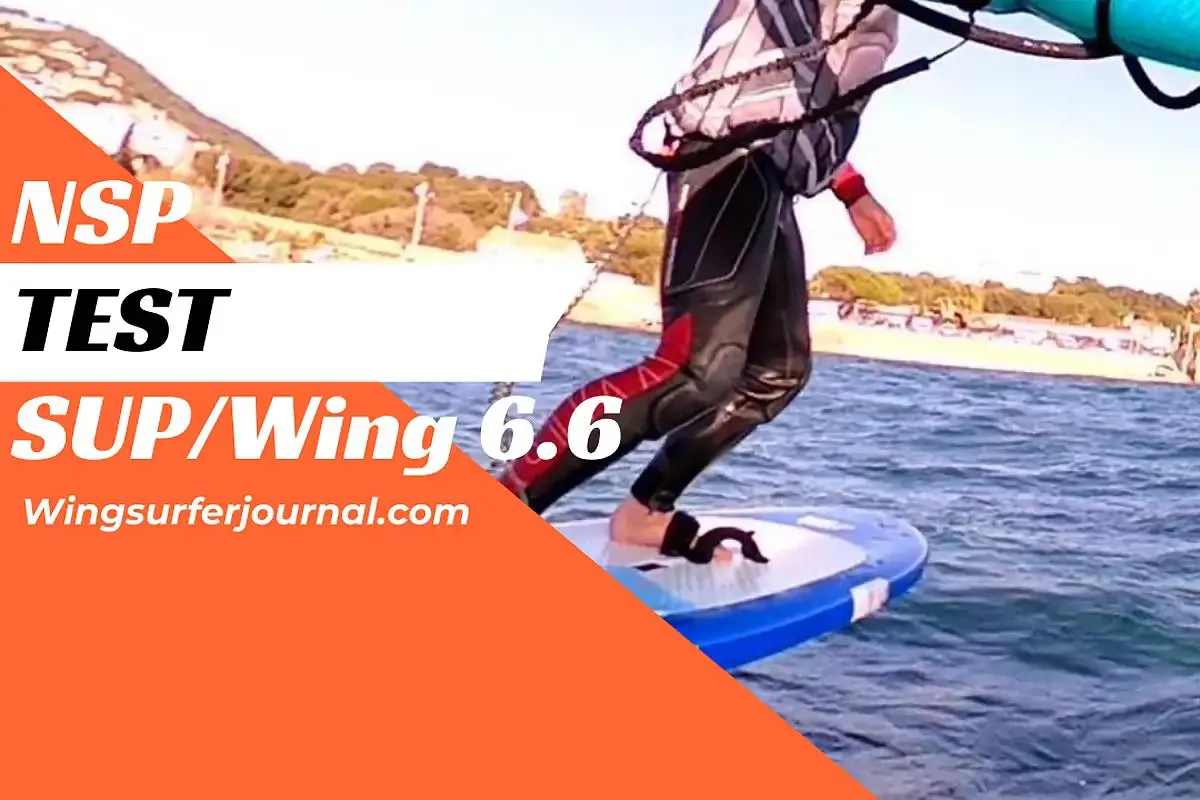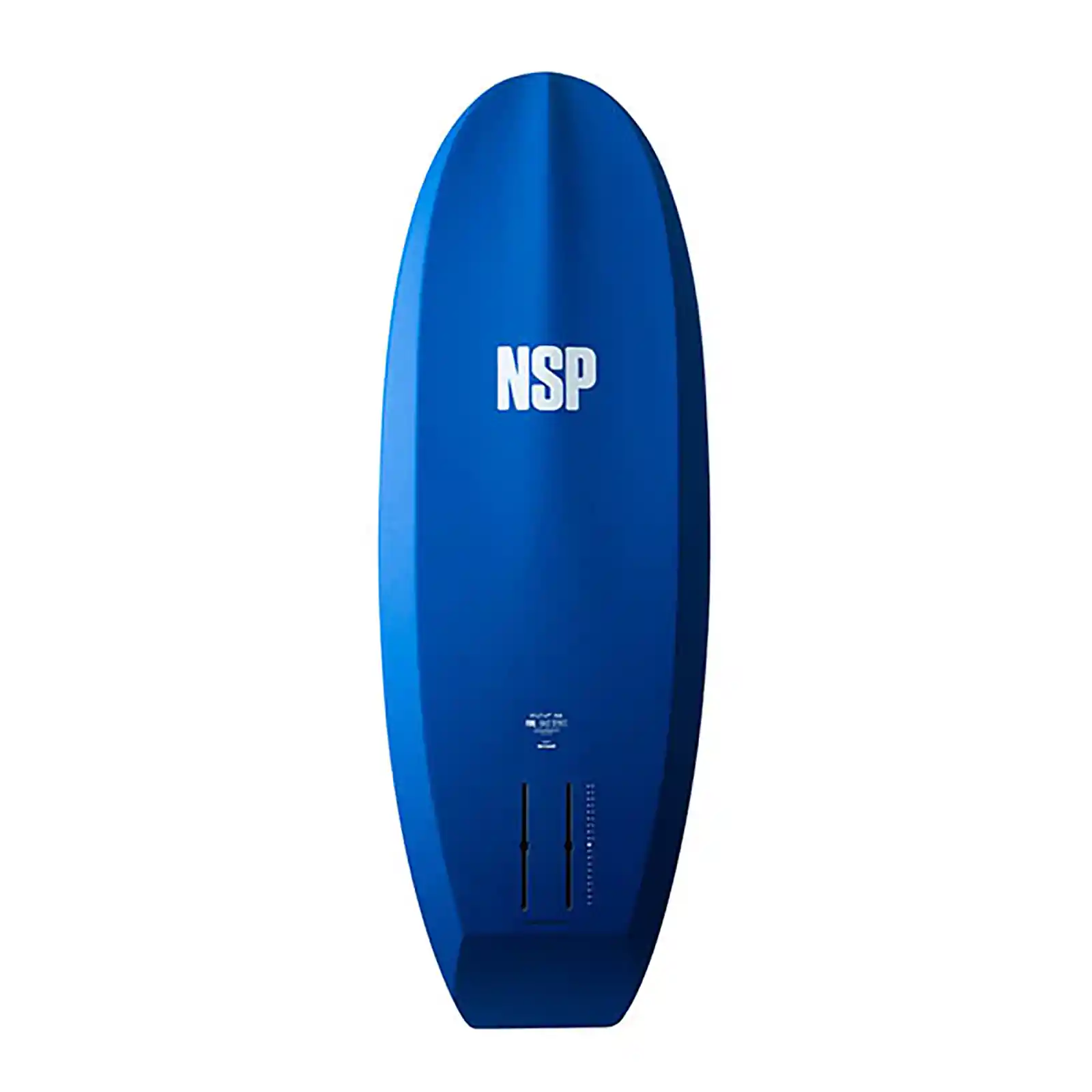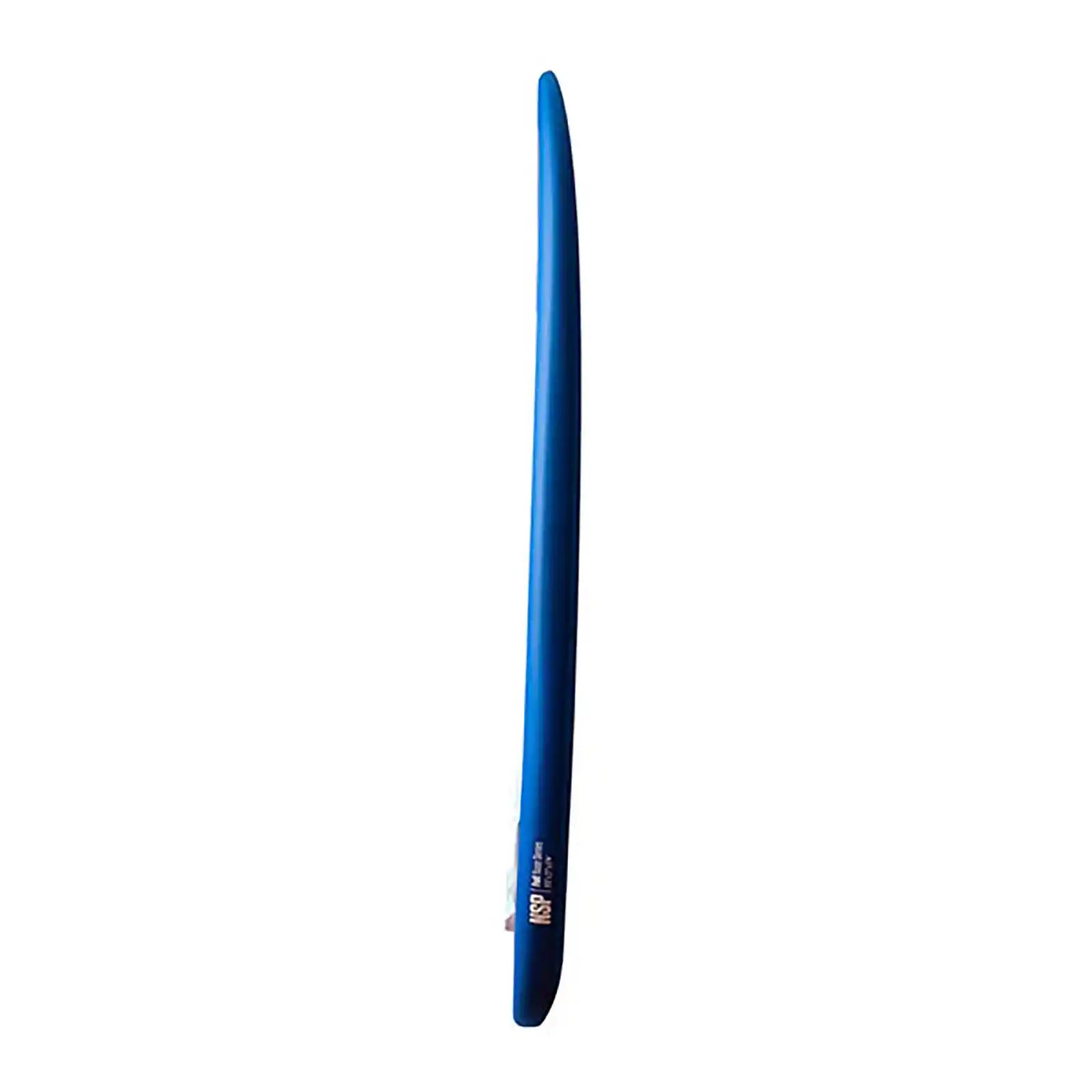NSP SUP / 6’6″ WING FOIL REVIEW
About Wingsurfer Journal
With the French being one of the main markets in water sports, WingSurfer Journal is a publication reporting on gear, destinations and riders for the French-speaking market. Their Wing Foil Review carries a certain weight, especially in the French-speaking market.
The magazine spawned from Windsurf Journal (related to SUP Journal), a publication that closely works together with distributors to get their hands on the latest gear for reviews.
What we say about the SUP / WING FOIL 6’6″
“Taking a considerate approach to designing a next-level SUP foil board, these shapes are all about performance foiling while maintaining accessibility.”
“A moderate stringer breaks the water’s surface tension and helps take-off speed. A mild nose scoop helps to recover from accidental touchdowns.”
Riders looking for a more radical or even smaller-sized foil board (4’2″) should look into the Pro version of this board.“

Features
- Perfect for first-time sup and wing foilers.
- Increased volume in the front half of the board and fuller rails compared to the pro series range, provide increased volume and stability.
- Dynamically efficient bottom shape allows you to get on the foil with minimal effort.
- Increase nose volume and chined rails make it easy to recover from dramatic touchdowns.
- Thermoformed EVA deck pad with pronounced kick tail and side wedges.
- Twin track foil tuning guide.
- Multi-positioning foot strap inserts mid-deck and tail.
In detail
Volume: 116 litres
Width: 27″ (68,8 cm)
Length: 6’6″ (198 cm)
Thickness: 4⁷/⁸” (12.3 cm)
Straps: Not included, inserts in 5 possible positions along the length of the board, two angles at the front
Foil mount: Twin rails, US standard
Handles: Two, one on the deck, one on the rocker
Sizes: 6’6” / 6’10” / 7’2”
What Wingsurf Journal.com says about the NSP SUP Foil
It has a more traditional design than the Pro model we previously tested, with a less pronounced hull shape. It is a board that offers sufficient volume for first-time SUP foil riders looking to get up on foil, be it with a wing or towed.
Like the Pro model (white in contrast to this one, blue), this shape is longer and narrower than its competition with similar volumes. The deck is very flat and the front rounded, offering a well-distributed volume for balance.
Its hull always offers a double concave on the front then a flat area and finally a large hook on the back of the board to limit your wet surface. It is thicker at the back than at the front but it is still fuller than its little sister and the rails are less pronounced on the nose of the board.
It shares the same comfortable pad used on the Pro version, with the extra thickness along the length of the board to really wedge in your feet for strapless use. The board features a kick-tail for additional support under your rear foot.
The inserts offer five positions of footstraps, with a central row at the back and 2 possible angles at the front. There is no decompression valve and the leash attachment ring is centered just behind the kick-tail EVa pad.
The twin tracks are standard and offer convenient markers to easily dial in your favorite settings. Two carrying handles complete the equipment with a handle below on the rocker and another one on the deck.
The test
“It’s a more classic board than the Pro 5’10”, which we were able to set foot on for this new test. Intended for novices and practitioners who want a multi-practice with the same board, 3 sizes are offered in this construction between 6’6” and 7’2”.
The 116 liters of this model offer sufficient flotation to maintain a good standing balance and the kneeling position is not mandatory for light to medium builders. The volume is ideally distributed between a fairly wide front and a thick rear to provide good stability when stationary, even if the heavier ones may lack a little ease, without speed.
The deck is flat and very comfortable, ensuring ease of foot movement during navigation. In strapless use it is very easy to move your feet to find the best leverage and when we did use straps, we did not hesitate to change them often depending on the foil used.
The inserts are obviously good benchmarks. Typically, we’ve used our foils in the forward position on the rails to lift the nose off the board. There is a lot of length to work with and the nose will sometime touch the water. Step back on the kicktail as soon as you get on foil, and we noticed occasional touchdowns return to flight immediately as the rail shape refuses to catch.”
“We also played around with the different shims on the rear wing, as this board was developed in conjunction with the Airwave foils which we also tested a while back. The shims allow you to finetune the angle of attack of your stabilizer wing.
Competing manufacturers offer different solutions to change the rake of the foil under the plates if necessary; raise the nose without shims is possible with shims under your mast foot.
The NSP features markings along the twin-track, allowing riders to make small modifications easy and quickly. To take flight quickly, moving your feet in a more forward position at the start of pumping helps speeding up.
Once on foil, you step back to be above the foil. As on the 5’10”, the small extra thickness on the longitudinal axis of the board helps pushing and also allows you to wedge in your feet.
Most users will ride strapless, but we have tested the board strapped up to add some power to our riding. It is a very pleasant toy offering that versatility of committing to an upwind angle, wedged into your EVA deck, and going for some tow-in foiling fun on the next day.
Each swell, each wave becomes a foiling opportunity. However, as soon as the waves get bigger, the length of the board becomes a restricting factor and you shouldn’t expect to perform radical moves with it.
Regardless of waves, swell or glass-like water, we had a lot of fun riding this to-the-point, comfortable and efficient shape.”
Verdict
“Unsurprisingly this model is intended for beginners. It continues NSP’s range with a versatile approach that allows riders to SUP and wing whenever they feel like one or the other.
The comfort of navigation is very interesting and we recommend this board for freeride and recreational use. It also really works in SUP foil sessions when the waves are smaller. Do not expect this to be a high-performing board, but think of it as a Swiss-army knife you open up to make the most out of your session.
More advanced riders are able to get their kicks from the Pro Sup-Wing models.“
TEST CONDITIONS
Wind: Between 5 and 30 knots
Conditions: Flat, choppy, swell, small waves
Spots: Almanarre, Garonne, Les Lecques,
Hours on the water: 6 hours, 5 sessions
PROS
Flat and comfortable deck
Versatile shape for SUP and wing
Stability
CONS
Length of the board
Slippery handle on the rocker
NSP SUP/WING 6’6″
Beginners: ⭐⭐⭐⭐
Intermediaries: ⭐⭐⭐⭐
Advanced: ⭐⭐⭐
Experts: ⭐⭐
Equipment: ⭐⭐⭐
Weight: ⭐⭐⭐⭐
Stability: ⭐⭐⭐⭐
Get on foil: ⭐⭐⭐⭐
Comfort: ⭐⭐⭐⭐
Versatility: ⭐⭐⭐⭐
All pics courtesy of tester – Follow Wingsurferjournal.com online or on social at Facebook and/or Instagram













